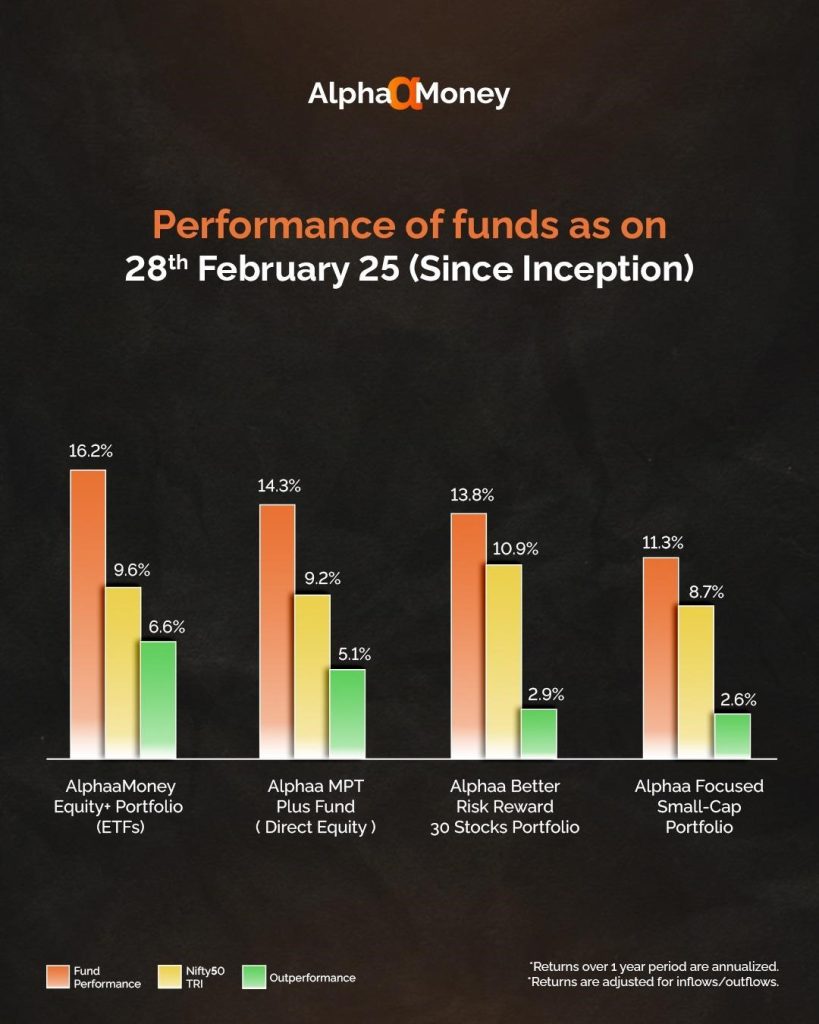Table of Contents
Portfolio Management Services (PMS) are tailored investment solutions that allow investors to work with professional managers to build and manage their portfolios. PMS provides customized strategies that align with your financial goals, risk tolerance, and preferences.
By opting for PMS, investors can access expert advice and well-structured investments to achieve their financial objectives efficiently.
PMS offers various investment strategies designed to meet the diverse needs of investors. These strategies can be classified based on factors such as investment control, market focus, management style, and other key features.
Understanding these will make it easier to pick the right option to meet your goals and risk tolerance.
This comprehensive guide will dive into different types of PMS in India and help you understand which investor profile each one is best suited for.
1. Based on Investment Control

Discretionary PMS Imagine hiring a professional driver to drive you around. You sit back, relax, and let the driver decide the best route to get you to your destination efficiently.
In discretionary PMS, the portfolio manager has complete authority to make investment decisions on your behalf.
Based on your risk profile and financial goals, the manager executes transactions without needing prior approval, allowing them to react quickly and effectively to market changes and seize opportunities when they come up.
Ask Yourself:
- Do you trust professionals to handle your investments?
- Do you find it difficult to dedicate time to managing your portfolio actively?
An investor who prefers a hands-off approach and trusts the expertise of a professional portfolio manager to make swift, data-driven decisions without requiring their input.
Non-Discretionary PMS
Think of this as being in the passenger seat with a skilled navigator by your side. They suggest the best routes, but you decide whether to follow their advice or take another path. Here, the portfolio manager provides investment advice but does not have the authority to act without your consent. They recommend strategies, but the investments will be made only after your approval. This option provides more control to the investor.
Ask Yourself:
- Do you want professional guidance but also want to retain decision-making authority?
An investor who wants professional guidance but also wishes to actively participate in making final investment decisions. Advisory PMS Picture yourself driving the car but with a GPS guiding you step-by-step. You get recommendations on the best routes to take, but you’re in full control of the wheel. Advisory PMS is a collaborative approach where the portfolio manager offers investment advice tailored to your needs. However, you execute the decisions independently.
Ask Yourself:
- Do you feel confident executing trades but want expert advice to guide you?
An investor who wants access to expert advice but prefers to maintain full authority over executing or declining investment suggestions.
2. Based on Management Style
PMS services can also be categorized by the management approach, which determines how actively the portfolio managers oversee and adjust your investments. Active Portfolio Management In active management, the portfolio manager strives to outperform the market by actively making investment decisions.
2
The goal is to maximize returns by selecting stocks or assets expected to perform better than the market average. Active management involves higher turnover, as the portfolio manager frequently buys and sells securities based on market conditions and analysis.
Ask Yourself:
- Are you open to paying higher fees in exchange for potentially higher returns?
- Can you tolerate frequent portfolio adjustments?
- An investor who is open to paying higher fees in exchange for the potential to outperform the market.
- Those comfortable with higher portfolio turnover
Ask Yourself:
- Do you prefer a simple, low-maintenance investment strategy?
- Are you satisfied with an index return alone, with reduced risk and long-term growth?
- An investor who values a hands-off, cost-effective approach to investing.
- Satisfied with benchmark market returns, with minimal effort and lower risk.
3. Based on Asset Class Invested

The above two categorizations of PMS are based on the management style and the degree of investor involvement in executing investments. However, it’s equally important to consider the type of asset class the PMS focuses on.
Although SEBI does not officially define different types of PMS categories based on asset classes, they can generally be grouped as follows:
Equity PMS
Equity PMS primarily invests in equity-related instruments, including both listed and unlisted stocks, as well as equity-focused mutual funds. The goal is typically to achieve significant capital growth over time by capitalizing on the fluctuations in the stock market.
Risk Profile: High, as the portfolio is exposed to market volatility and the inherent risks of stock investments.
Ideal for you if you are:
● An investor aiming for long-term growth in capital.
● Someone with a high-risk tolerance and comfortable with market fluctuations.
Debt PMS
Debt PMS is focused on fixed-income assets, such as corporate bonds, government bonds, and other debt instruments. It is designed to generate steady returns while minimizing the risk of losing principal.
Risk Profile: Lower in comparison to Equity PMS, though still subject to interest rate changes and credit risks.
Ideal for you if you are:
● An investor who values stability and predictability in returns.
● Focused on preserving capital while achieving modest growth.
Hybrid PMS
Hybrid PMS blends equity and debt investments in a single portfolio. This combination allows for diversification, aiming to strike a balance between growth and income generation.
Risk Profile: Moderate, with risk levels determined by the proportion of equity to debt in the portfolio.
Ideal for you if you are:
● An investor looking for a balance between growth and income in their investment portfolio.
● Someone who prefers diversification within a single investment strategy.
Multi-Asset PMS
Multi-Asset PMS extends beyond traditional equity and debt instruments to include assets like gold, Real Estate Investment Trusts (REITs), Infrastructure Investment Trusts (InvITs), and other alternative investments. The aim is to provide broad diversification and reduce the overall risk.
Risk Profile: Varies depending on the asset allocation and strategy implemented.
Ideal for you if you are:
● An investor looking for a well-diversified portfolio across multiple asset classes.
● Interested in adding alternative assets to your portfolio for better risk management.
ETF PMS (Exchange-Traded Fund PMS)
ETF PMS is centered on investing in Exchange-Traded Funds (ETFs), which are designed to mirror the performance of an index (eg. Nifty 50), a commodity, bonds, or a basket of assets like an index fund.
It’s a more passive strategy, where the focus is on achieving market returns with minimal intervention.
Risk Profile: Generally moderate to low, due to the broad diversification provided by ETFs, although sector-specific ETFs may have higher risks.
Ideal for you if you are:
● An investor seeking exposure to market indices or specific sectors with minimal management.
● Preferring a cost-effective, passive investment strategy that offers diversification and transparency.
4. Based on Market Capitalization Focus (Equity PMS)

In Equity PMS, an investment strategy is determined by market capitalization, which can focus on large-cap, mid-cap, small-cap, or flexi-cap companies.
Each strategy comes with a distinct risk-return profile, requiring investors to choose based on their risk appetite and objectives.
1. Large-Cap Strategies
Large-cap PMS strategies focus on companies ranked among the top 100 by market capitalization.
These businesses are well-established, offer stability, and are known for consistent performance. While large caps carry lower risk compared to mid and small caps, they may not deliver extraordinary returns.
Ideal for you if you are:
An investor seeking steady growth with minimal volatility and a focus on preserving capital.
2. Mid-Cap Strategies
Mid-cap PMS strategies mostly invest in companies with market capitalizations ranking between 101 and 250. These firms strike a balance between stability and growth potential, offering higher returns than large caps but with increased risk.
Ideal for you if you are:
An investor willing to accept moderate risk for the potential of above-average returns.
3. Small-Cap Strategies
Small-cap PMS strategies delve into emerging companies outside the top 250 in market capitalization. These stocks are often under-researched, providing portfolio managers an opportunity to identify undervalued gems and generate outsized returns.
Ideal for you if you are:
A high-risk-tolerant investor seeking aggressive growth opportunities.
4. Large & Mid-Cap Strategies
This strategy combines investments in large-cap and mid-cap stocks, balancing the stability of large-caps with the growth potential of mid-caps. The allocation typically leans towards companies that can offer steady returns with moderate risk.
Ideal for you if you are:
An Investor seeking a balanced approach that minimizes risk while capturing higher returns from mid-cap stocks.
5. Small & Mid-Cap Strategies
By blending small and mid-cap stocks, this strategy aims to achieve higher returns than large-cap-focused portfolios. It balances the growth potential of smaller firms with the relative stability of mid-sized businesses.
Ideal for you if you are:
An investor looking for diversified growth and comfortable with a mix of moderate and high risk.
6. Flexi-Cap Strategies
Flexi-cap strategies allow portfolio managers to invest across all market caps without restrictions. Stock selection is driven by fundamentals, technical analysis, or a combination of methodologies. While flexible, these strategies require significant research resources to avoid pitfalls.
Ideal for you if you are:
An investor seeking diversification across market caps and willing to trust the portfolio manager’s decisions without overthinking the timing or company selection.
7. Multi-Cap Strategies
Multi-cap PMS strategies maintain a diversified portfolio across large-cap, mid-cap, and small-cap stocks. Unlike flexi-cap strategies, multi-cap portfolios are more structured, with predetermined allocations to each market cap segment.
Ideal for you if you are:
Investors looking for structured diversification across all market caps.
5. Based on Factor Focus (Equity)
Beyond market cap, Equity PMS strategies may emphasize specific characteristics, or “factors,” within their chosen stocks. These factor-focused approaches shape how stocks for portfolios are selected.
1. Value Investing
This strategy identifies fundamentally strong companies trading below their intrinsic value. invest in these undervalued stocks and profit as their prices rise to match the company’s actual value over time.
Ideal for you if you are:
An investor who prioritizes long-term growth with minimal downside risk.
2. Growth Investing
Growth investing involves targeting rapidly expanding companies with high earnings potential. While these stocks often command a premium price, they can deliver superior returns over time.
Ideal for you if you are:
An investor focused on maximizing gains, even at the cost of higher initial valuations.
3. Momentum Investing
Unlike growth investing, momentum investing relies on stock price trends rather than company’s earnings growth and business. Portfolio managers aim to ride the upward trend of a stock and exit before it reverses. However, this strategy involves frequent trading and can incur higher costs and taxes.
Ideal for you if you are:
A short-term investor looking to capitalize on market trends.
6. Thematic and Sector-Based Strategies (Equity)

Equity PMS strategies can also target specific sectors or broader investment themes to capitalize on the growth potential of a particular industry or concept.
- Sectoral Investing
Sectoral strategies target stocks within a specific sector, such as IT, pharmaceuticals, or banking. This approach benefits from the growth of a particular sector but is subject to higher risks due to its narrow focus.
Ideal for you if you are:
An investor confident in the growth of a specific sector and willing to take on sector-specific risks.
- Thematic Investing
Thematic strategies focus on a broader theme that spans multiple sectors. For example, a defence theme could include companies from manufacturing, technology, and other related industries. This approach offers diversification while maintaining focus on a central theme.
Ideal for you if you are:
An investor seeking diversified exposure within a single theme, balancing risk and reward.
Understanding the clear distinction and different types of PMS helps investors choose strategies that align best with their financial goals and risk preferences.
Whether you seek professional management with full discretion or wish to stay involved in decision-making, whether you prefer equity, debt, or hybrid, or have a specific sector focus you’re confident about—PMS offers strategies for every investor.
Selecting the right PMS enables you to tailor your investments for long-term success and peace of mind, ensuring your financial journey aligns with your unique objectives.
Read – How to Invest in PMS in India: Everything You Need to Know – For step-by-step process of selecting and investing in a PMS in India.
Invest in Alphaamoney PMS Strategies
Now that you’re familiar with the different types of PMS in India, it’s time to take the next step with Alphaamoney.
With a team of expert fund managers and strategies designed to outperform market benchmarks, Alphaamoney empowers you to grow your wealth with confidence and peace of mind.
Whether you prefer Discretionary Equity PMS for hands-on fund manager expertise or ETF PMS driven by Modern Portfolio Theory, Alphaamoney has personalized solutions tailored to meet the unique goals of every investor.

